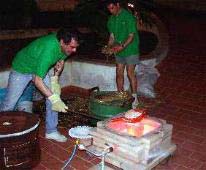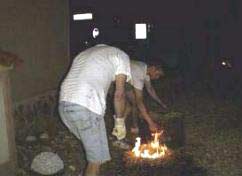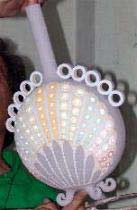|
Raku technique |
|
Raku describes a type of pottery preferred by Japanese tea Masters. The process began about 500 years ago in Japan and today became popular in the Unites States and Europe. However Raku firing bears little resemblance to the original Japanese raku method.
In this process bisque - ware is brushed with glasses containing metal-oxides (picture 1) and it's placed in a pre-heated kiln and fired up to 950° C.(picture 2). The glowing-red pots are removed and placed in combustibles such as paper or sawdust or another (picture 3). The piece is sealed by borrel, creating an oxigen-free atmosphere which sparks a chemical reation called " reduction". Carbon monoxide glazes materials, causing the metallic effects which appear on the pottery surface (picture 4).
Areas of exposed clay become smoked during this process. The piece are then quenched in a barrel of water. The spontaneous effects of Raku are affected by firing time, reduction tyme, etc. This also means that by overlaying glazes you get some surprising and exciting results. Each person finds the way that suits them best.
|
|
 |
 |

|
